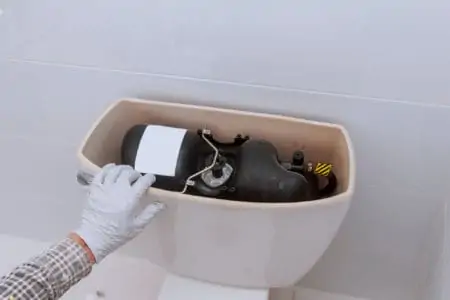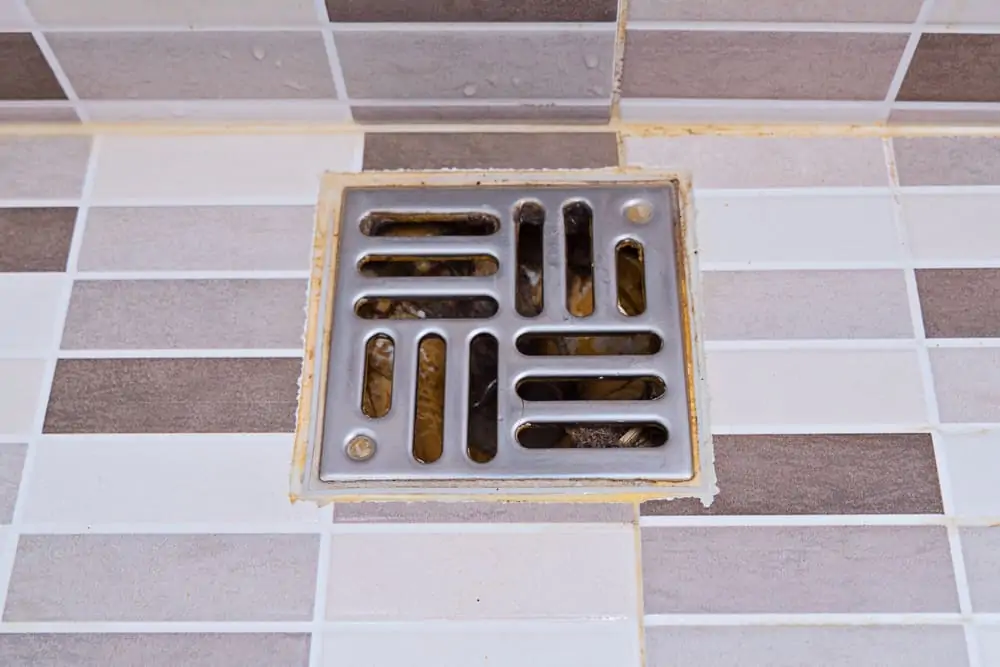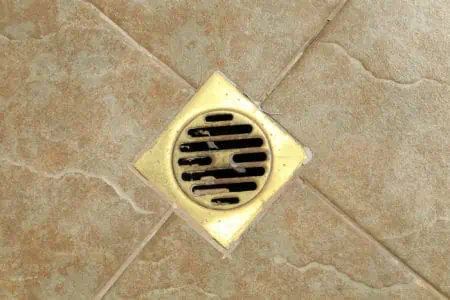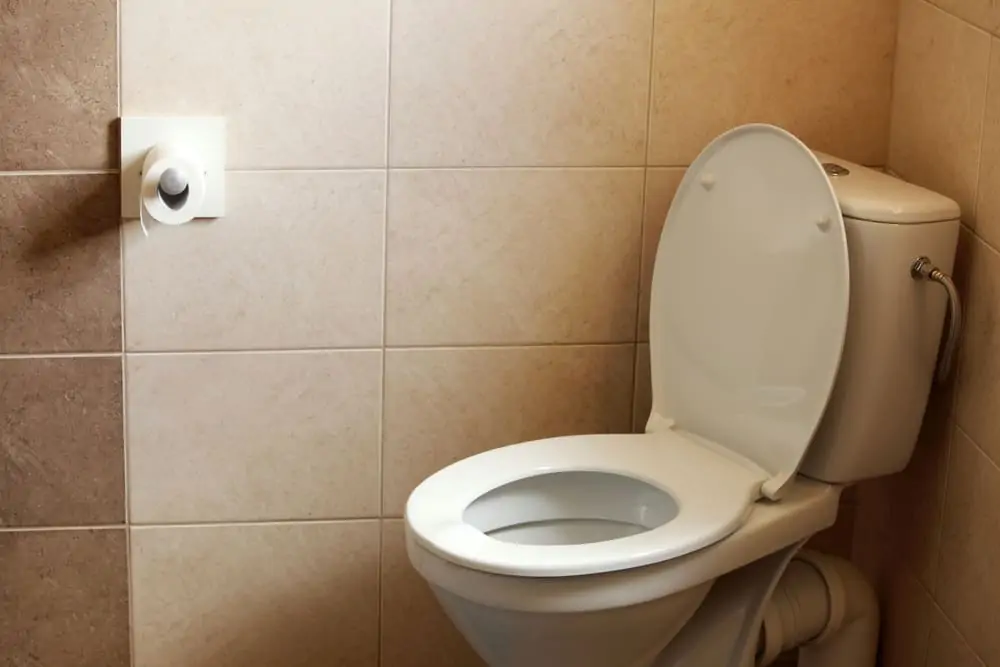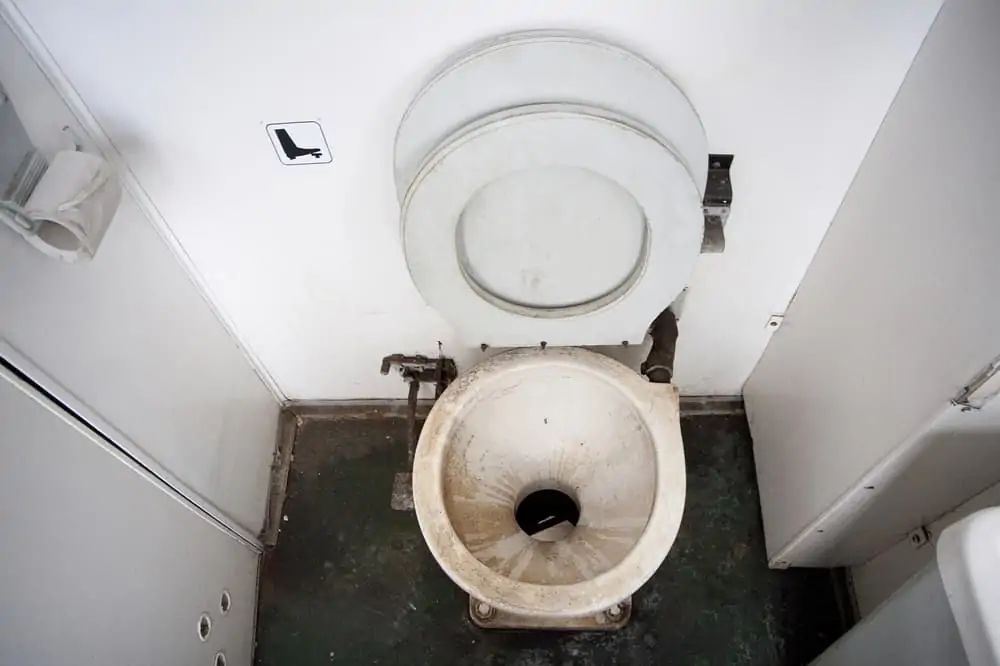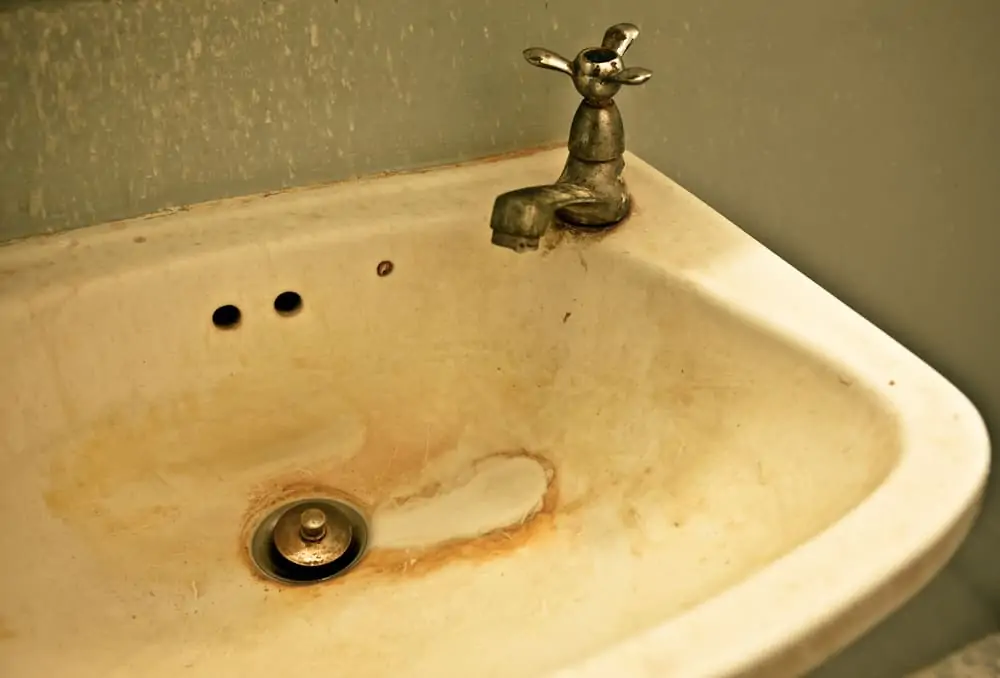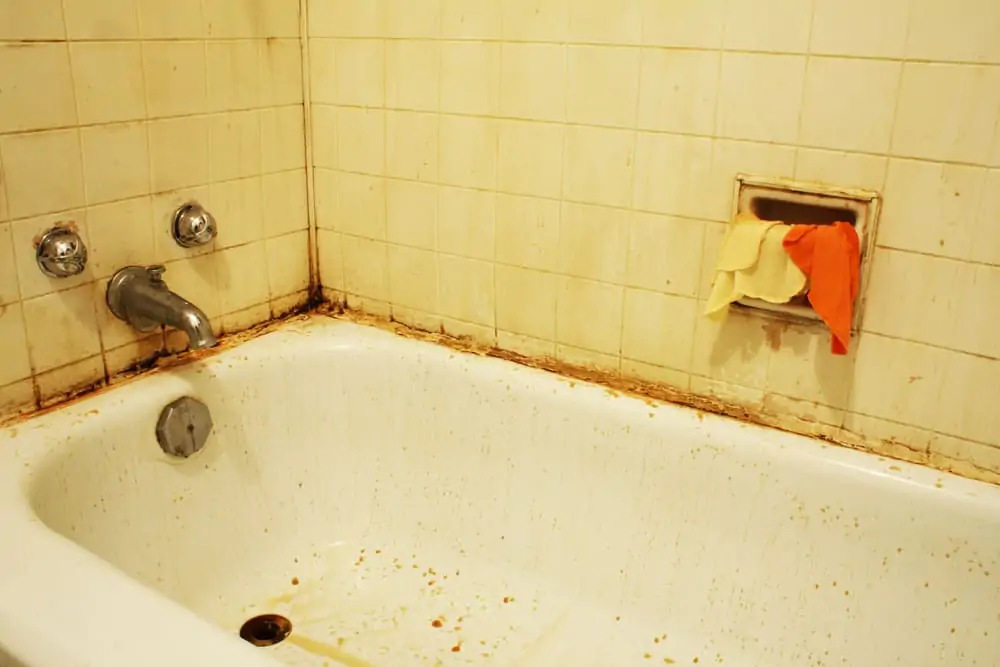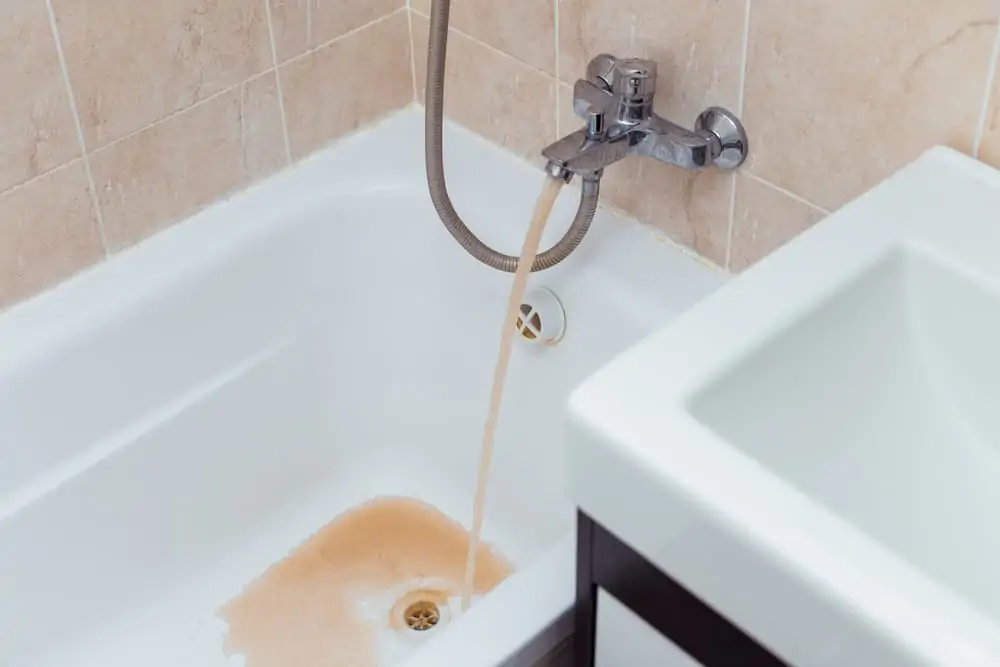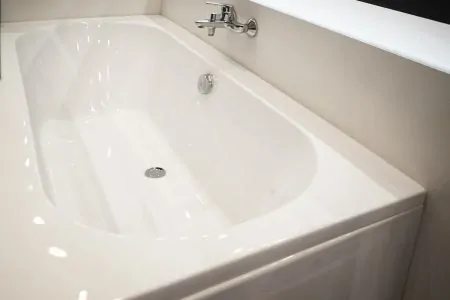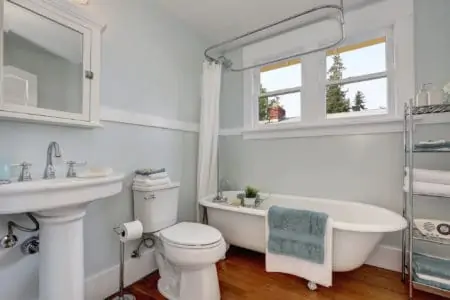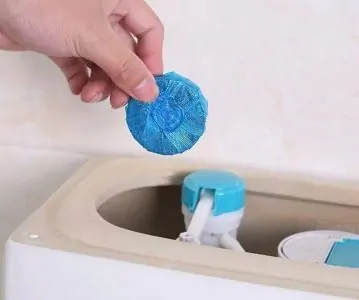Bathrooms can be smelly at the best of times, especially after someone has used the toilet, which is why candles and scents are often used to keep it smelling sweet. Sometimes the smell goes deeper, like sewer odors, which could signify a bigger problem.
When your bathroom smells like sewage, it’s time to get your rubber gloves on and go and investigate. We look at common causes of foul odors and what you can do about them.
Key Takeaways
- Check for biofilm accumulation in the shower drain, as it can cause sewage smells.
- Inspect the P-trap for leaks or dryness, as this can allow sewage odors into your bathroom.
- Examine the toilet for improper vent pipe installation or broken seals, which can let sewer gases escape.
- Keep your sink, bathtub, and water heater clean to prevent bacteria growth that can cause foul smells.
What Does a Sewage Leak Smell Like?
Ever smelled rotten eggs? Because that’s what sewage smells like in your bathroom. It’s because of the gasses inside the sewer system, thanks to human waste breaking down.
This creates hydrogen sulfide and methane, which are responsible for the eggy smell.
Is Sewage Smell in Bathrooms Dangerous?
Hydrogen sulfide is highly toxic, flammable, and hazardous to your health. Depending on the level of contamination in your bathroom, it can induce headaches, nausea, shortness of breath, drowsiness, and heart palpitations.
Also, if sewage is backing up into your bathroom, you should consider that everything the sewage touches will need to be replaced, at great expense because of its toxic makeup.
Your basement and lower ground floor rooms will bear the brunt of backed-up sewage, and any belonging down there could also get ruined.
Why Does My Bathroom Smell Like Sewage?
Now that we’ve discussed what sewage smells like and if it’s dangerous, we need to look at the causes of the smell. To do this, we are going to look at the different elements of your bathroom.
Shower Drain
Your shower drain harbors all manner of bacteria and pollutants. Keeping your shower clean reduces the risk of sewage smells.
Biofilm Accumulation
Showering is a great way to get clean, but all those soap products you use collect in the drain and cause a biofilm that contains bacteria. If left unchecked, it grows, creating sewage smells. So, it is important to keep the drain clean.
How To Get Rid of Biofilm
- Take the cover of the drain using a screwdriver as a lever.
- Dip a paint roller cover in water and disinfectant, giving it a good soak.
- Insert the roller cover into the drain and move it around in circles, removing the biofilm.
- Put the cover in water and disinfectant and give it a good scrub.
- Replace the cover once it is clean.
Dry P-Trap
The P-trap stops odors from backing into the bathroom because it has a small reservoir of water that sits in the trap. When the water evaporates, smells can filter through. This often occurs when the shower sits idle for a long period.
You should check the P-trap for leaks, as this might be the cause of the water loss. It’s also a good idea to pour some disinfectant down the trap to remove any foul-smelling bacteria before filling it up.
How To Refill the P-Trap
- Give the P-trap a clean using a cloth and some disinfectant.
- Run the shower until the trap has been refilled.
- Check the trap for leaks.
- Before replacing the drain cover, wait to see if the water remains.
- If all is good, replace the drain cover.
Stagnant Water
If you are leaving the shower for an extended period, that water in the P-trap becomes stagnant, which is when bacteria starts to grow, and the water emits a sewage smell. This is easy to fix because all you need to do is run the shower to remove the dirty water.
Toilet
Considering the amount of human waste that passes through your toilet, it is unsurprising that occasionally, it smells of sewage. If you’ve checked the shower and the bad odor still exists, focus your attention on the toilet.
Improperly Installed or Cut Vent Pipe
The vent pipe takes away the sewage smells from the toilet and channels them up and away from the house. If the pipe is improperly installed or cut incorrectly, it could be funneling the sewage smell back down the pipe and into your bathroom.
If you suspect this is the case, you will need to call a professional to sort the issue. That way, you get the job done safely and to the correct standards. You also get a guarantee on the work should anything go wrong within the warranty period.
Broken or Loose Seals
The seals join your toilet to the drain, and they stop sewer gasses from leaking back into your bathroom. If the seals are loose or broken, hydrogen sulfide may escape, causing the egg smell that is common with sewage.
They also harbor bacteria, mold, and mildew, allowing them to thrive, which increases the yucky smells.
Plus, if the seals are broken, water escapes and soaks your bathroom floor every time you flush, which could lead to much larger and more expensive repairs.
How To Fix Broken Seals
Only attempt this if you have some plumbing experience because it involves removing your toilet.
- Isolate the water supply in the bathroom.
- Flush the toilet until the water tank is empty.
- Disconnect the water tank, taking great care not to crack or drop it.
- Grab a small container and scoop out the water in the base of the toilet.
- Using an adjustable wrench, undo the bolts at the base of the toilet and remove them.
- Score around the base of the toilet to cut what remains of the seal.
- Lift the toilet away from the drain hole and turn it upside down.
- Remove the old seal and replace it with a new one, making sure it is completely clean.
- Make sure you check the toilet for cracks.
- Place the toilet back over the drain hole and insert the bolts.
- Now replace the water tank and switch the water back on.
There is a debate whether you should caulk around the base of the toilet. Some professionals claim it reduces sewer gasses, while others argue that the seal does that. If you want to caulk, feel free because it won’t do any harm.
Blocked Toilet
If your toilet is blocked, sewage builds up in the pipes, and smells begin to back up into your bathroom. There are tell-tale signs that there is a blockage. When you flush, the water doesn’t drain away and starts to fill the bowl.
Sometimes you hear gurgling in the toilet or sink, which indicates you might have a blockage in the system. It could also mean you have a clogged vent. The purpose of the vent is to channel clean air while extracting the sewage smells up and away from your home.
Sometimes birds nest in vents because they are handy sites. If you have a blocked toilet vent, you probably should call in professionals to deal with it.
How To Unblock a Toilet
There are several ways to unblock a toilet, but for the purposes of this article, we will assume you are using a plunger.
- Seal the drains in your sink and shower to create the pressure needed to move the blockage.
- Insert the plunger into the toilet, making sure it covers the trapway.
- Plunge down using a medium amount of force. This pushes water into the drain, pressing against the blockage.
- Lift the plunger upwards, sucking the water with it. Repeat the process several times until you feel the water start to drain.
- Once the water disappears down the drain, flush the toilet to see if the blockage has gone.
- Now remove the seals on the sink and shower drains.
As we said, there are several ways to unblock your toilet. You could use a plumber’s snake or a chemical unblocker that you pour down the toilet and wait while it loosens the offending items. Another method is to simply wait while the blockage clears itself.
Because your toilet is gravity-fed, whatever is sitting in your pipes must eventually decompose enough that it simply slides down the drain. Plus, water helps to break down solid masses, again helping them slide away.
Sink
Your sink could be the culprit if you’ve checked the shower and toilet and the smell still exists. Soap scum, grime, limescale, hair, and dead skin are all flushed down the drain, so is it any wonder it can become clogged.
Build Up in the Overflow
If the water fails to drain away, it flows into your overflow, which means stagnant water and bacteria start to build up. When that happens, mold and mildew begin to grow, which causes that sewage odor.
How To Clean the Overflow
- Using a small bottle brush with a flexible stem could be one way to get the grime out of the overflow.
- Mix a solution of bleach and water and soak the brush in the cleaning solution.
- Insert the bottle brush into the overflow and start scrubbing.
- Wash the brush regularly and repeat the procedure until the overflow is clean.
How To Unblock a Sink
- Pour half a cup of baking soda and vinegar into the sink.
- Allow it to sit for 30 minutes with the sink stopper in place.
- When 30 minutes have expired, remove the stopper and grab a plunger.
- Move the plunger up and down, creating a seal.
- Now run warm water into the drain for a couple of minutes.
- Repeat the steps if the blockage remains until it is cleared.
If the problem persists, you may need to call in a plumber.
Bathtub
If you see black flakes coming out of your bathtub drain, it could be caused by biofilm accumulation. Just like your sink, your bathtub is subject to the same punishment of hair, scum, soap, and human skin.
Biofilm
Biofilm is a slimy substance that contains bacteria and coats almost every surface. Bathtub drains are particularly susceptible to biofilm build-up. The simplest way to avoid biofilm build-up is to adopt a weekly cleaning regime and squirt bleach or white vinegar and water into the drain.
This cleans and disinfects the area and stops the colonies of bacteria from establishing inside your drain.
You might also notice a pink hue to the surface of your bathtub, especially near where the water drains away. The color comes from a bacteria called Serratia Marcescens. You frequently find biofilm on wet surfaces, including sinks, shower enclosures, toilets, and even kitchen countertops.
Once it takes hold, it spreads quickly. It can easily stain and pit household surfaces because they contain yeast, fungi, protozoa, and other microorganisms. They are also bad news because they harbor dangerous bacteria that cause illness in humans.
How To Remove Biofilm From Your Bathtub
Biofilm cannot easily be removed using just bleach or other detergents. It has to be agitated first, which means using some elbow grease.
- Scrub the bathtub with a stiff-bristled brush to break up the biofilm.
- Rinse away the debris using warm water.
- Apply white vinegar and water or household bleach over the tub surface.
- Leave it to stand for several minutes as it dissolves the broken-up biofilm.
- Rinse away again, using a microfiber cloth to wipe the surfaces.
- Leave to dry.
- Apply a liberal spray of vinegar and water to protect the surface against regrowth.
Water
Water contains bacteria colonies that grow when the conditions are suitable. Any part of your home could suffer from bacteria spread, and that includes your water heater.
Bacteria in Your Water Heater
Your water heater typically keeps bacteria at bay using heat, but if you leave it for a long period without use, you have the perfect conditions for bacteria growth. Here’s what you should do:
How To Remove Bacteria From Your Water Heater
- Turn up the temperature on the water heater, so the water gets really hot.
- Leave it for 24 hours to kill the bacteria.
- After 24 hours, run the hot water taps to drain away any contaminated water.
- Turn the temperature back to the correct setting.
Hydrogen Sulfide in Your Water
If you think you have hydrogen sulfide in your water supply, you will need to contact your local water testing lab. This is not something you can sort yourself. You might notice that your water has a rotten egg smell, and it will be more noticeable from your hot tap because heat vaporizes more gas.
When To Call a Professional
If you’ve tried all of the techniques above and you still cannot diagnose the source of the smell, call in the pros and get the job done once and for all. Remember that sewage contains pathogens and bacteria that are harmful to human health.
Plus, sewer gasses contain methane, which is highly flammable in concentrated doses.
